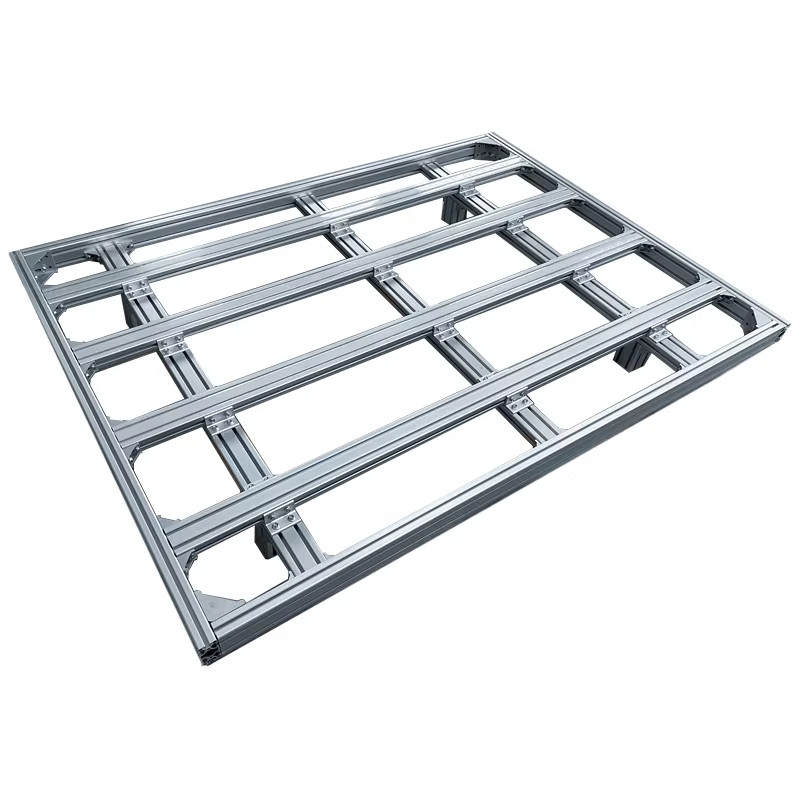The exceptional versatility and flexibility along with its lightweight and robust properties makes aluminum extrusion a favorable choice for construction, automotive, and electronic practices. Heated aluminum aluminium billets are shaped into complex cross sections by passing through a custom die within an extrusion press, for which a streamlined rod or a tube and even thin cavity walls is possible. Unlike most native fabrication methods, for example casting, machining, die methods of manufacturing entails a singular approach for achieving a desired end state. With the right outline, high potential intricate shapes can be achieved.
For any functional needs, engineers can continuously modify desired components till satisfaction is achieved. In construction, for example. integrated thermal breaks can be added to aluminum bottom rails to conserve energy for windows and doors. Extruded aluminum can be further be utilized for integrated lightweight and slim routers for electronic devices which is able to externally dissipate. Lubricated recessed dimmers with slotted walls for LED lights are also possible. In the automotive manufacturing, once again, lightweight structural components can be utilized to greatly diminish overall vehicular mass. Suppliers such as Hengdong Aluminum utilize the flexibility of custom extrusion for both standard and custom grade solutions.

Aluminum is light, about 1/3 the weight of steel, but its structural performance is improved through extrusion technology which also uniformly creates load-bearing profiles. Parts made from extruded aluminum also achieve high strength-to-weight ratios, which makes them suitable for applications with strict restrictions on weight but with high demands on strength. Such weights savings are in high demand in the aerospace industry, where lower weight translates to savings on fuel, and in automotive manufacturing where light-weight components improve fuel economy and reduce emissions.
For example, extruded aluminum frames in electric vehicles EVs are used to strut battery packs because they provide enough rigidity to protect the battery, providing low weight and improved driving range. In construction, extruded aluminum scaffolding is used in construction because it is lightweight, and easier to assemble and transport than its steel counterparts. Scaffolding is still able to support heavy loads. The uniform extruded aluminum is also stronger than cast parts which suffer from porosity, having weaker points due to weak points due to porosity.
The process of Aluminum extrusions is a highly productive method of manufacturing given the amount structural extrusion elements manufacturing involves. The process of extrusion “butt extrusion” involves a primary charge and a charge of extruding aluminum. The excess aluminum which is a part of the wire butt can easily be broken down and reformed into any part of a billet and this process exceeds a 95% recycling ratio. The reduced “primary charge” of recycling aluminum is cut down to 5% of the Primary Charge of Aluminum. This keeps the goal of attaining raw material costs well within the benchmarks.
Extrusions is a much more refined technique as compared to the manufacturing method of “machining” which tends to leave behind larger amounts of excess material. For high rate production units, the ability of extrusion Aluminum to produce profiles continuously creates a lower per unit cost. Moreover, the production of aluminum extrusions requires a limited amount of secondary processing, and the cutsAlong with drilled profiles, the aluminum can be finished with anodising, painting and powder coating without regressive techniques saving expenditure and time.
Extruded aluminum profiles were made to enhance easy setup. Numerous pre-drilled holes, slots, and interlocking configurations maximize their ease of setup. This simplifies setup integration for modular furniture, display racks, and even industrial equipment. Extruded aluminum framing systems are an example of how ease of connectivity and reconfiguration can be obtained with T-Slot designs. Components can be set quickly using bolts and brackets. These bolts and brackets can be dense, allowing reconfiguration of the frame if the manifolds and configurations change.
Futhermore, the cohesive design of extruded aluminum profiles compared to complex systems makes them far easier to maintain. Excluding the need for painting or reapplication of anti corrosion oil, the aluminum can be effortless to clean. Added protection in the form of durable polymer surfaces can be added. Doing these processes will greatly minimize required maintenance. Lower operational costs will be seen with these extruded parts.